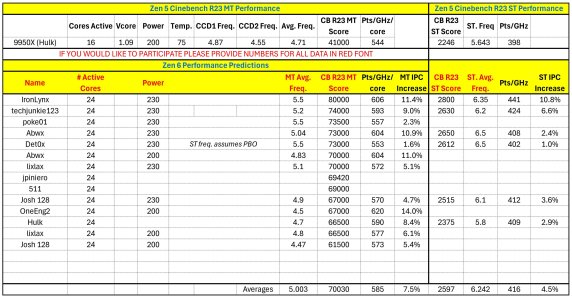techjunkie123
Member
- May 1, 2024
- 154
- 328
- 96
Hulk, my predictions are:
24C, 230 W
5.2 GHz MT, 74000, 593 pts/ghz/core, 5% IPC gain
6.2 GHz ST, 2630, 424 pts/ghz, 5% IPC gain
24C, 230 W
5.2 GHz MT, 74000, 593 pts/ghz/core, 5% IPC gain
6.2 GHz ST, 2630, 424 pts/ghz, 5% IPC gain




